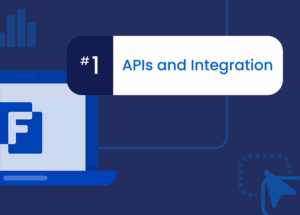As Salesforce evolves its Education Cloud, Nonprofit Cloud, and other verticals, a powerful new architecture for assessments is emerging – one that promises flexible, dynamic forms to collect and manage data efficiently across industries. But what if you don’t have the expertise or resources to use Salesforce’s Omni Studio tools?
That’s where FormAssembly comes in.
During our annual virtual user conference, FormFest 2025, we explored the new Salesforce assessments architecture, how it structures data, and how we’ve built a streamlined, scalable FormAssembly form that brings this powerful framework to life — without the need for complex custom coding or specialist staff.
Watch the clip from FormFest below, or read on to learn more.
Understanding the New Salesforce Assessment Architecture
Salesforce’s updated architecture centers around a few key objects designed to give you flexibility and control over assessments:
- Assessment Question Set: The top-level object representing a group of related assessment questions (essentially your question library or survey template).
- Assessment Question Assignment: Connects individual assessment questions to a question set.
- Assessment Question: Each individual question, which supports versioning, categorization, and data typing (text, number, checkbox, etc.).
- Assessment Question Version: Enables version control, so you can roll out updates while maintaining historical data integrity.
For example, at Unity Environmental University, this architecture allows them to create custom assessment question sets that map to different surveys, with a clear version history and data type controls. It’s a thoughtful, robust design, though it may seem complex at first glance.
Why Use FormAssembly Instead of Omni Studio?
Salesforce encourages using Omni Studio to build dynamic forms based on this architecture. However, many organizations lack the Omni Studio expertise or want a solution that business users can manage themselves.
We discovered that FormAssembly can replicate this exact experience with a simpler setup that is:
- Low-code: No heavy coding or specialist skills required.
- Dynamic: The form builds itself based on the data in Salesforce records.
- Flexible: Supports all major data types needed for assessments.
- Business-user Friendly: Admins and non-technical staff can create and modify question sets easily.
How the FormAssembly Assessment Form Works
At the core is a single dynamic assessment form that adapts to whatever question set you pass it via URL or other means. Here’s how it functions:
- Pulls Salesforce Data: Uses a slim prefill connector to grab the assessment question set and all related questions and versions.
- Supports Multiple Data Types: Fields render dynamically based on data type – text, email, number, decimal, checkbox, radio button, file upload, date, and more.
- Repeatable Sections: The form loops through each active question version, displaying only the relevant fields.
- Built-in Validation: Uses FormAssembly’s native validation for data accuracy (e.g., email format, required fields).
- Customizable UI: Logos, colors, fonts, titles, and button text can be controlled from Salesforce to tailor the form’s look and feel per use case.
This means one form can serve many purposes, adapting its questions, styling, and content entirely based on Salesforce data – no separate forms or complex workflows needed.
Empowering Business Users
One of the biggest benefits of this setup is empowering business users:
- They can create and update question sets directly in Salesforce records.
- No need for a FormAssembly license or deep technical knowledge.
- Changes are reflected dynamically in the form, so updates happen in real-time without IT intervention.
This opens up assessment management to a wider audience and reduces bottlenecks.
Real-World Example: Unity Environmental University
Using this architecture and FormAssembly form, Unity Environmental University can:
- Manage multiple assessment question sets for different programs.
- Customize each survey’s branding and style without coding.
- Collect high-quality, validated data from respondents.
- Maintain version control and data integrity through Salesforce.
Looking Ahead
We’re actively working to extend support for additional data types (like date-time) and further polish the customization options. The goal is to make assessment collection as seamless, scalable, and user-friendly as possible, whether you’re on Education Cloud, Nonprofit Cloud, or a legacy Salesforce org.
Conclusion
Salesforce’s new assessment architecture offers a powerful foundation, and with FormAssembly, you can unlock that power in a flexible, accessible way – no Omni Studio expertise required.
Whether you’re building surveys for students, donors, or staff, this approach lets you create dynamic, data-driven forms that are easy to manage and scale.
